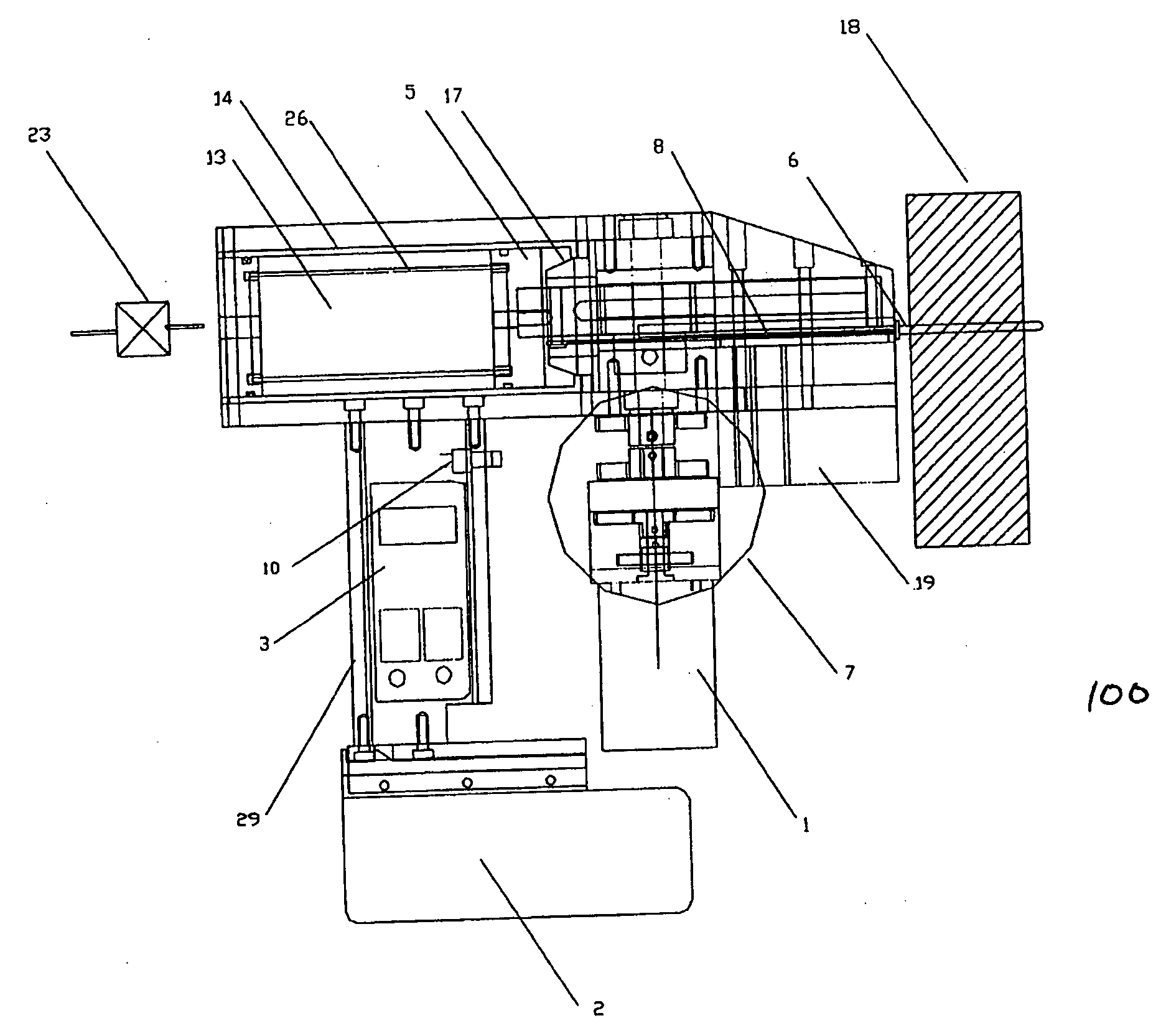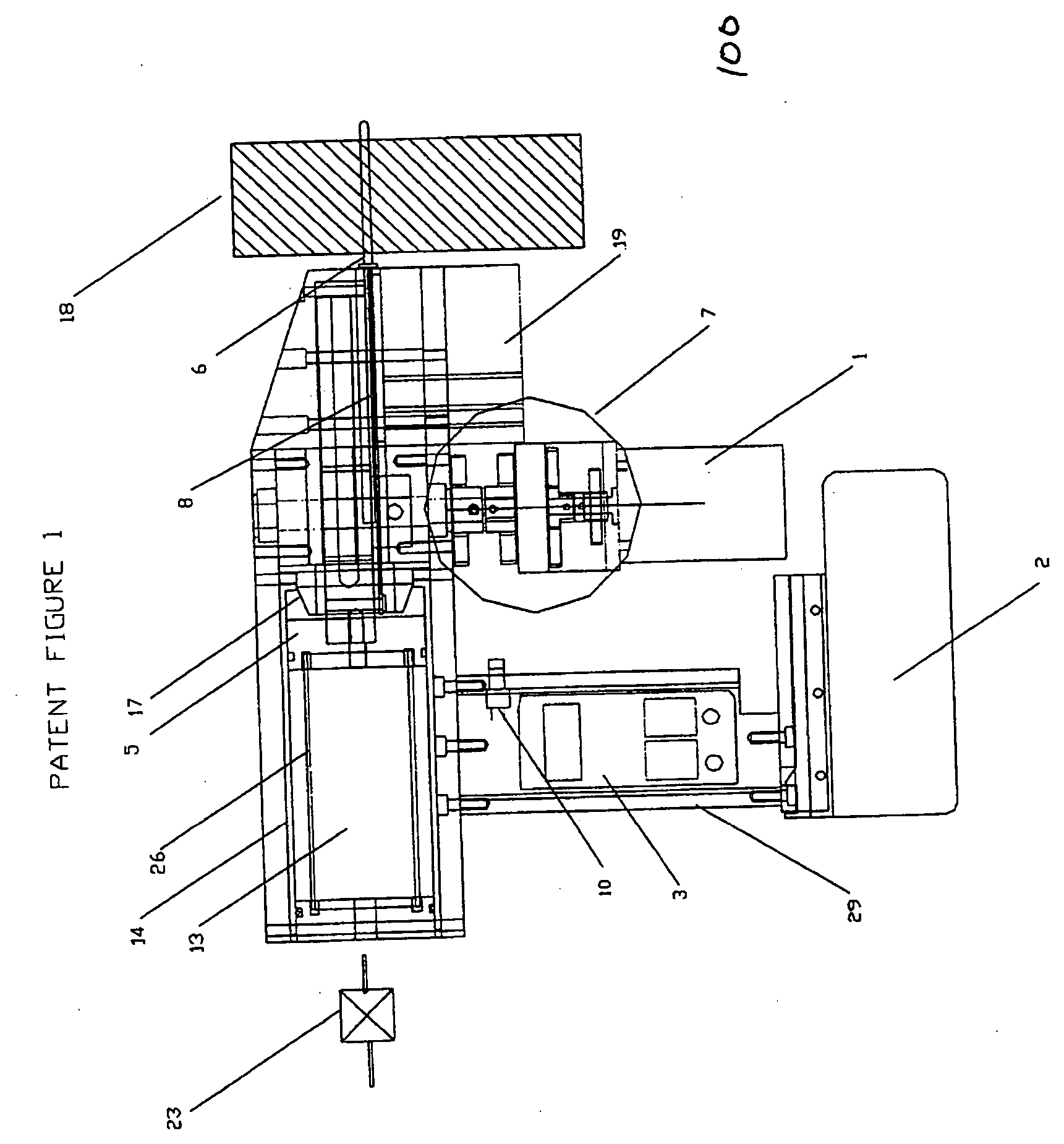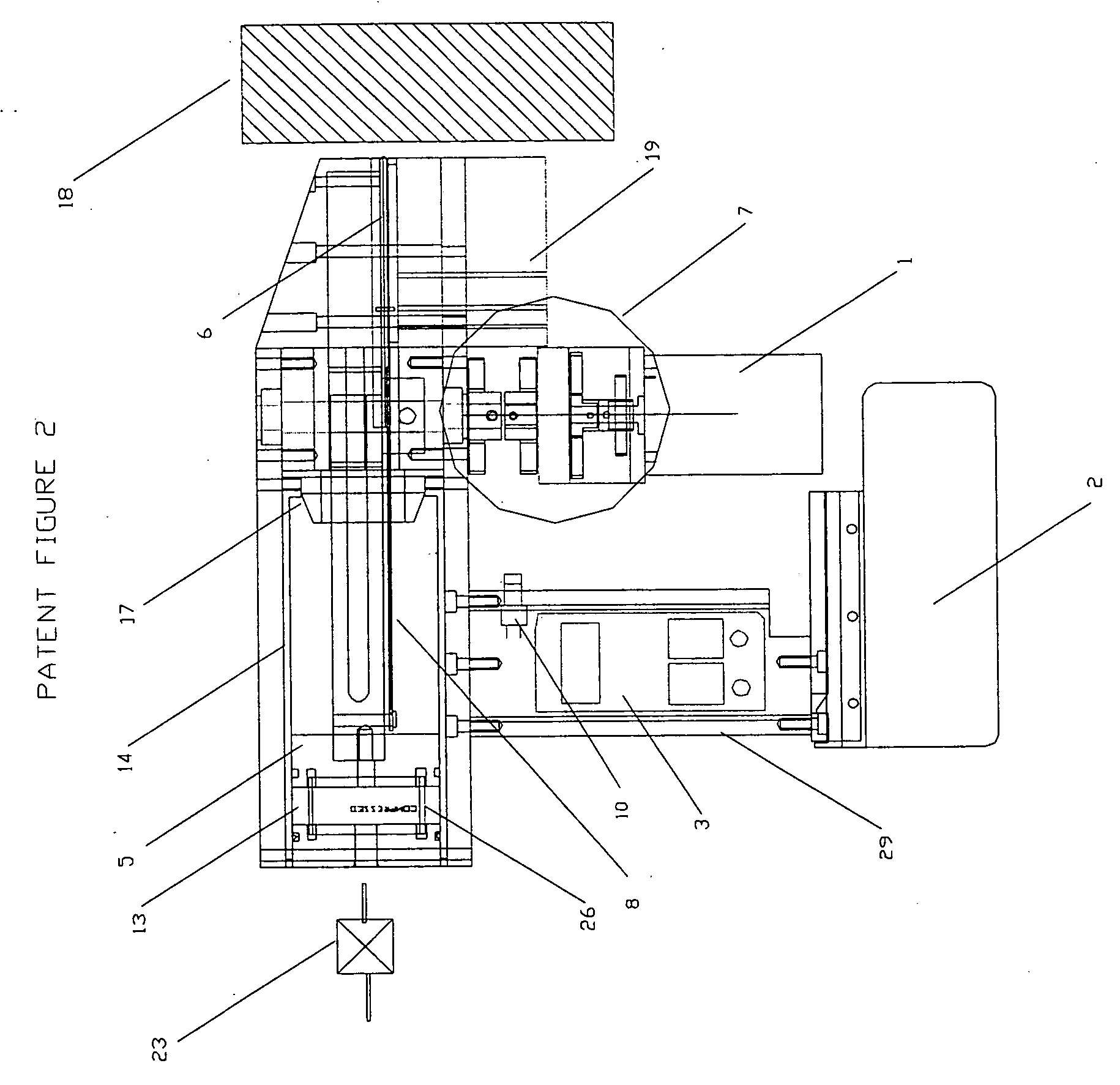Typical within this design is the need for a fairly complicated
assembly.
One of the drawbacks of these types of mechanisms is that the number of
ampere-turns in the solenoid governs the force provided by a solenoid.
These requirements are counterproductive because the resistance of the coil increases in direct proportion to the length of the wire in the solenoid windings.
This type of design suffers from a second drawback in that the force in a solenoid varies in relation to the distance of the solenoid core from the center of the windings.
This limits most solenoid driven mechanisms to short
stroke small load applications such as paper staplers or small brad tackers.
There are several disadvantages in this design that include increased operator fatigue since the actuation technique is a series of blows rather than a continuous drive motion.
Additionally, the multiple
impact designs normally require a very heavy mechanism to insure that the driver does not move during the driving operation.
Several drawbacks exist to this design.
These include the need for a
complex system of compressing and controlling the spring, and in order to store sufficient energy, the spring must be very heavy and bulky.
Additionally, the spring suffers from fatigue giving the tool a very
short life.
Finally,
metal springs must move a significant amount of
mass in order to decompress, and the result is that the
low speed nail drivers result in a high reactionary force on the user.
The major drawback to this design is the problem of
coupling the
flywheel to the driving anvil.
This prior art teaches the use of a friction clutching mechanism that is both complicated, heavy and subject to wear.
This design also suffers from difficulty in controlling the energy left over after the nail is driven.
Operator fatigue is also a concern as significant
precession forces are present with flywheels that rotate in a continuous manner.
This design is limited by the large
precession forces incurred because of the continuously rotating
flywheel and the complicated and unreliable nature of the toggle link mechanism.
This patent overcomes some of the problems associated with the mechanical spring driven fasteners described above, but is subject to other limitations.
Limitations of this design include safety hazards in the event that the anvil jambs on the downward
stroke.
Clearing the
jamb would subject the user to the full force of the air driven anvil, causing potential injury.
Finally, by not including control features such as motor braking and sensing position of the rack, the design is unreliable for robust use.
The drive or compression mechanism used in this device is limited in stroke and thus is limited in the amount of energy which can be stored into the air
stream.
Furthermore, the compression mechanism is bulky and complicated.
In addition, the timing of the motor is complicated by the small amount of time between the release of the piston and anvil
assembly from the drive mechanism and its subsequent re-engagement.
Additionally, U.S. Pat. No. 5,720,423 teaches that the anvil begins in the retracted position which further complicates and increases the size of the drive mechanism.
All of the currently available devices suffer from one or more disadvantages which include: 1.
With the fuel driven mechanisms, portability is achieved but the design is complicated.
Mechanisms from the prior art that utilize rotating flywheels have complicated
coupling or clutching mechanisms based on frictional means.
Devices that use springs to store
potential energy suffer from reliability and complicated spring compression mechanisms.
The ignition of an explosive mixture to drive a nail causes a very loud sound and presents
combustion fumes in the vicinity of the device.
Multiple
impact devices are fatiguing and are noisy.
Combustion driven portable nail guns are more complicated to operate.
The degree of control over the nail driving operation is very crude as you are trying to control the explosion of a combustible mixture.
Mechanical spring driven mechanisms have high tool reaction forces because of their long nail drive times. Additionally, the springs are not rated for these types of duty cycles leading to
premature failure.
Complicated and bulky designs.
The “
air spring” driven designs described use a complicated mechanism which is unwieldy and leads to a bulky tool.
Additionally, they are not robust in error
recovery and can be hazardous during
jamb conditions.
 Login to View More
Login to View More 


